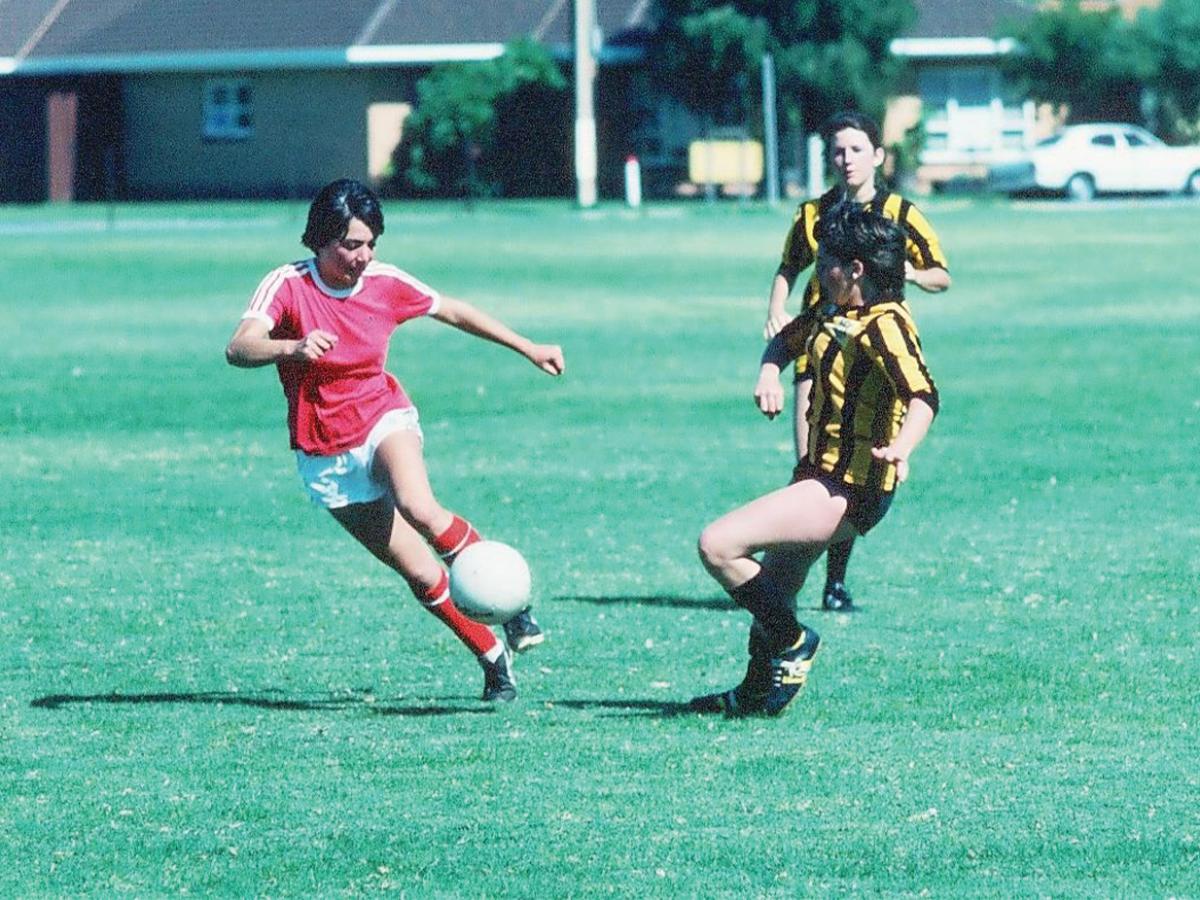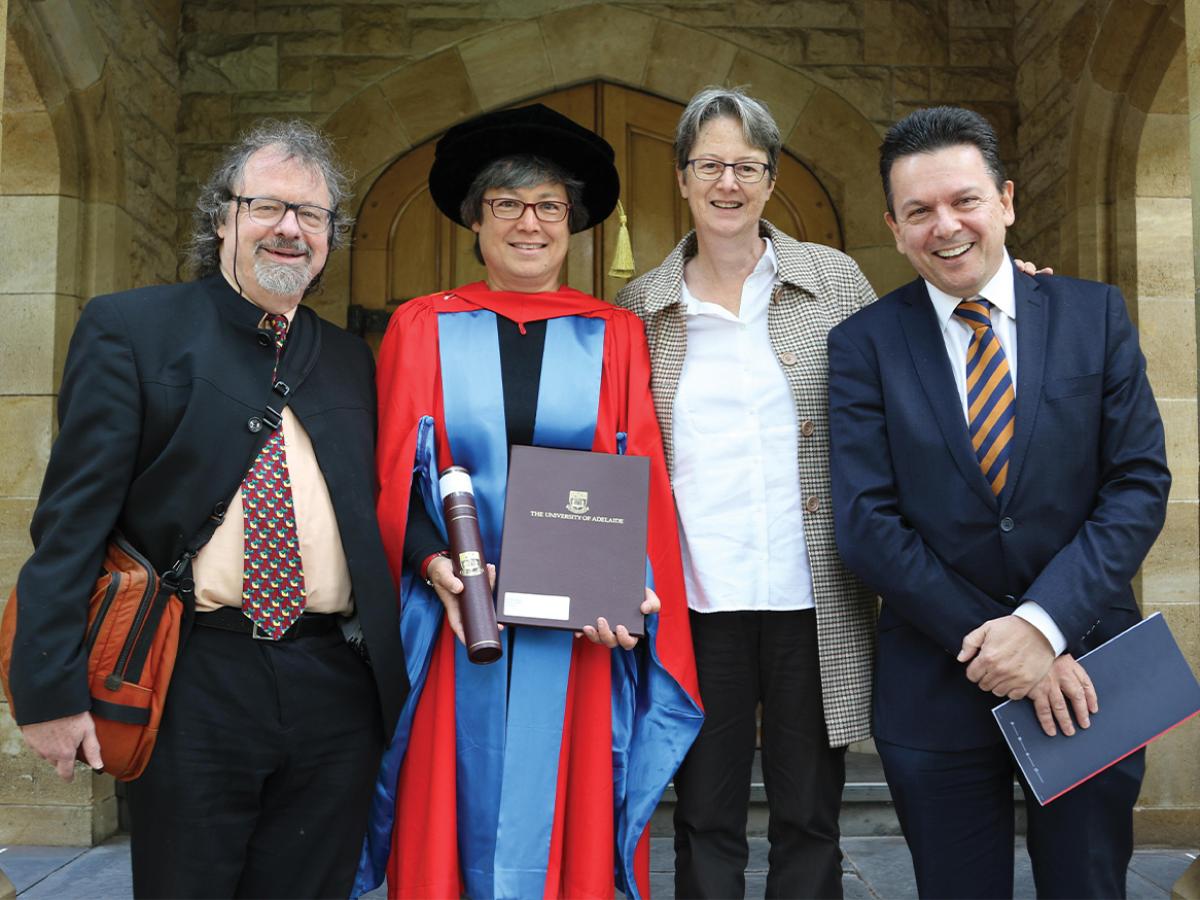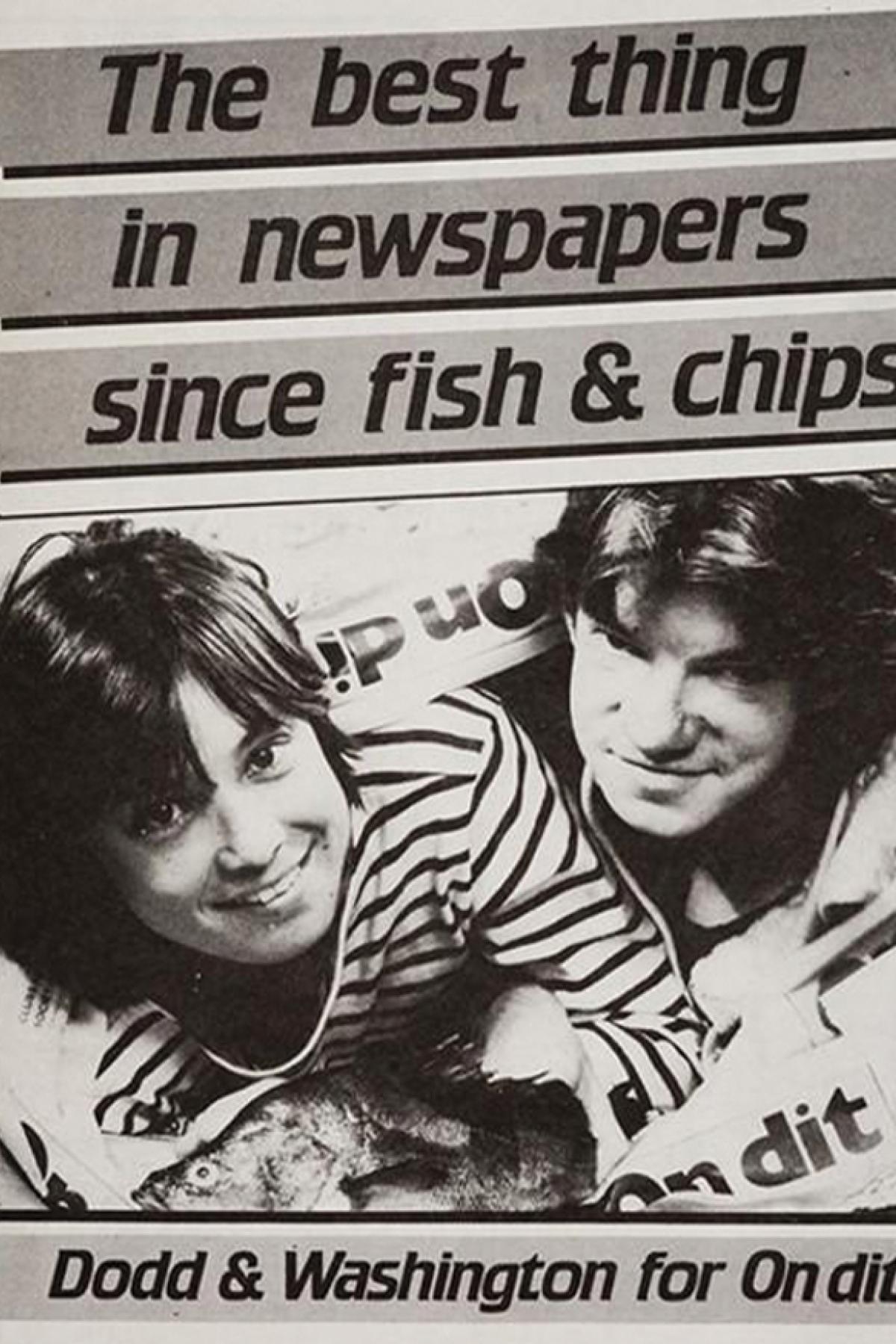Moya Dodd
We were all in the sandpit of campus public life, a training ground for the real thing - thankfully with no social media and limited permanent memorials to our more forgettable efforts

It was a hot summer day in early 1982 when I ventured onto campus for my first Orientation Week. Olivia Newton-John was topping the charts with Physical, replete with lyrics considered scandalous at the time. I was 16 years old, and headed for Law School, On Dit and the Adelaide Uni Soccer Club.
I belonged to the jackpot generation – the lucky ones whose tertiary education was free thanks to Gough Whitlam’s vision of accessible education for the masses. With a brother and sister already enrolled, our family was able to afford three university educations on our father’s fireman’s wage.
It was compulsory to join the union, which funded the Student’s Association of the University of Adelaide, abbreviated to SAUA but pronounced “sewer” (with officeholders mocked as “sewer rats”). As it turned out, some would have plenty of spotlight in later life. Julia Gillard was about to become president of the Australian Union of Students. Christopher Pyne would soon enter student politics. Nick Xenophon was a well-known campus entrepreneur whose movie nights were legendary. Penny Wong and Natasha Stott Despoja were on their way.
We were all in the sandpit of campus public life, a training ground for the real thing - thankfully with no social media and limited permanent memorials to our more forgettable efforts. Student unions were the lifeblood of campus. There was an abundance of clubs and societies, ranging from the Chocolate Appreciation Society to the Evangelical Union. You could marshal a few friends, apply for a grant, and make some mischief. With no uni fees and so much fun to be had, we were in no hurry to leave. Why would you? Mental as Anything were playing for free on the Barr Smith lawns. You might even catch Midnight Oil in the UniBar.
With law school, the student newspaper and the soccer fields all within a stone’s throw of the Cloisters, I had my own personal nirvana. Campus was an oasis of discovery. And pranks – especially on Prosh Day. Potassium permanganate usually found its way into John Dowie’s famous Victoria Square fountain. Some remember a ‘for sale’ sign appearing on St Peter’s cathedral, allegedly hung in the dead of night by some rock-climbers from the Mountain Club. On Dit put out the ‘Prosh Rag’, lampooning everybody including themselves. It was only after I travelled a lot that I realised that Australia has a unique brand of larrikinism.
But beneath this restless energy lay a dark undercurrent of homophobia, emblematised through a man I never met but often thought of as I crossed the footbridge to football training. Dr George Duncan was a newly recruited law lecturer whose life ended in the Torrens one night in 1972 – said to be at the hands of the police who regularly pushed men into the water along what was known as a gay beat. Perhaps this was why one Prosh prank involved the reverse irony of a police car dumped into the Torrens. Memories are unclear as to whether it was a whole police car, or (more likely) a part-submerged piece of metal with a convincing blue light on top.

I co-edited On Dit with Paul Washington in 1986. We were part of the so-called ‘dynasty’ of independent editors, stretching from the late 70s well into the 80s (including my brother Tim Dodd in 1982). The paper was a hothouse of nerdy young newshounds who studied industry bibles such as Pictures on a Page and Handling Newspaper Text. Editors handed down skills in news writing, photography, bromiding, and wrangling an ancient, cantankerous headlining machine. Each weekend began with waxed typesetting, layout knives and blank sheets, and ended with print-ready works of art.
Our ambition extended beyond campus. We ventured into investigative territory with every intent of showing up the staid Advertiser, then the counterpoint to Murdoch’s afternoon tabloid The News. Our first edition led with George Duncan’s case. Three former vice squad officers had just been charged with manslaughter.

We chimed in with leaked details of a secret Scotland Yard report that implicated the police. “The report four governments hid”, ran the headline. The officers were acquitted, and the case remains unsolved, but the killing of George Duncan was pivotal in the de-criminalisation of homosexuality in Australia. 1986 was South Australia’s sesquicentenary year, 150 years after colonisation. It was a Festival of Arts year, meaning plenty of free tickets for wannabe arts reviewers. It was also the year I was first selected for the Matildas, then a mere minor curiosity on the sporting landscape. The Adelaide Uni team had proven a fruitful training ground that attracted many of the state’s best players. Jill Latimer and Tracey Jenkins were among those who also gained national selection. We all had to pay our own way, assisted by club-mates who organised endless lamington drives and quiz nights. As a university team, we at least had access to good fields with decent lights – something still prized by teams today.
No-fee tertiary education, compulsory student unionism, and access to sport are three of the most crucial ingredients that shaped my life. I’ll always be grateful for them, and only wish they were all still there for today’s generation.
Moya Dodd AO graduated LLB (Hons) in 1988. She became a Doctor of the University (honoris causa) in 2021. Moya represented the University in soccer from 1982-1988 and played 24 games for Australia, with the Matildas, from 1986-1995, including their appearance in the first-ever FIFA world tournament for women. She has held senior roles in national and global football administration.
Images supplied: Moya on the gallop playing for the Uni; campaigning to become On Dit Editor.
